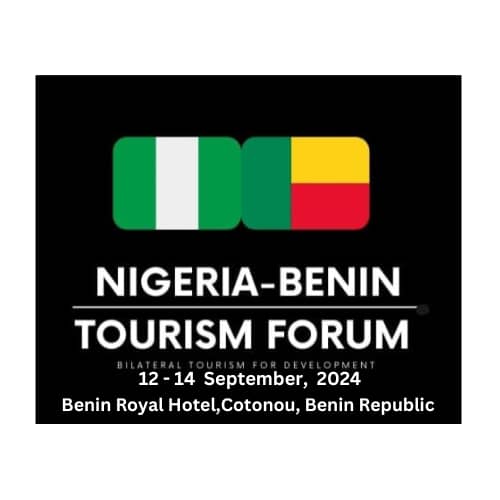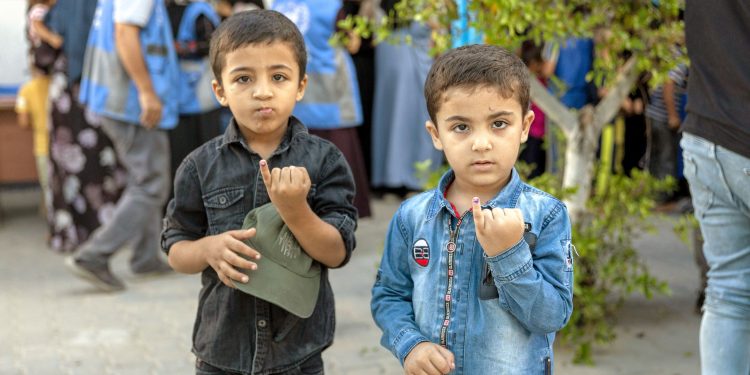The World Health Organization (WHO) has said that around 560 000 children under ten years old were vaccinated against polio during first round of emergency vaccination campaign conducted in three phases from 1-12 September 2024 in the Gaza Strip.
This was disclosed in a statement released by the health agency in Geneva on Friday, while added that the twelve-day campaign provided novel oral polio vaccine type 2 (nOPV2) to 558 963 children, following meticulous planning and coordination.
WHO explained further that this involved the use of an extensive network of teams, vaccinating at selected fixed sites at health facilities and outreach posts in the country.  It added that mobile and transit teams actively reached out to families living in shelter homes, tents, and camps for the displaced, alongside community workers engaging families to raise awareness ahead of and during the campaign.
It added that mobile and transit teams actively reached out to families living in shelter homes, tents, and camps for the displaced, alongside community workers engaging families to raise awareness ahead of and during the campaign.
It was revealed that for each phase, an area-specific humanitarian pause of nine hours daily was agreed to ensure the safety of communities and health workers, and enable vaccination efforts.
WHO Representative for the occupied Palestinian territory (oPt), Dr Richard Peeperkorn said health and community workers have shown incredible resilience, carrying out this campaign at unprecedented scale and speed under toughest conditions in Gaza. He added that swift action by the Global Polio Eradication Initiative—from the moment the virus was detected to the launch of the vaccination campaign—speaks to the effectiveness of the polio programme.
He added that swift action by the Global Polio Eradication Initiative—from the moment the virus was detected to the launch of the vaccination campaign—speaks to the effectiveness of the polio programme.
According to him, “In areas where humanitarian pauses took place, the campaign brought not just vaccines, but moments of calm.
“As we prepare for the next round in four weeks, we’re hopeful these pauses will hold, because this campaign has clearly shown the world what’s possible when peace is given a chance”, he said.
Also reacting to this development is the UNICEF Special Representative in the State of Palestine, Jean Gough who said It was critical this ambitious campaign was carried out quickly, safely and effectively to protect children in the Gaza Strip and neighbouring countries from the life-altering poliovirus. Gough said that the progress made in this first round is encouraging, “but the job is far from done. We are poised to finish the task and call on all involved to ensure we can do so in the next round in four weeks’ time, for the sake of children everywhere.”
Gough said that the progress made in this first round is encouraging, “but the job is far from done. We are poised to finish the task and call on all involved to ensure we can do so in the next round in four weeks’ time, for the sake of children everywhere.”
It was also revealed that partners at all levels recognize common operational challenges faced during these efforts, which includes devastated infrastructure, from health facilities to roads.
Also, limited trained healthcare workers, access issues due to insecurity, limited fuel for generators used to safely store vaccines and freeze ice packs, and constant population movements.
However, the WHO said these issues were addressed in a timely manner, with the key support of the Palestinian Ministry of Health and UNRWA, to enable planned vaccination activities.
“Despite these challenges and the conditions that families in the Gaza Strip have endured over the past 11 months, families flocked to health facilities to get their children vaccinated.
“This can be attributed to traditionally positive health seeking behaviour among the Palestinian people and impactful campaign to raise awareness and mobilize the public”, the WHO stressed.
It was stated that the original target for the campaign was 640 000 children, estimated in the absence of an accurate survey, which may have been over-estimate, as population continues to move from place to place, and people are fleeing and being killed due to the ongoing hostilities.
“During the campaign, trained monitoring teams were deployed to oversee vaccination efforts. As next steps, 65 independent monitors are being deployed to cross-check proportion of children vaccinated across the Gaza Strip to independently assess the level of coverage achieved in the first round.
“They need safe, unimpeded access so they can visit households, markets, transit points, and health facilities to check children for the prominent purple dye marked on their little finger when they are vaccinated.
“These efforts will provide an independent measure of the percentage of vaccination coverage achieved and reasons for any unvaccinated children”, the WHO explained.
WHO made it known that a second round of the campaign will follow, ideally within four weeks, to provide a second dose of nOPV2 to children in Gaza to stop the outbreak and prevent its international spread.
To repeat this ambitious intervention, reach enough children, successfully stop further transmission of the poliovirus, WHO, UNICEF and UNRWA called on parties to the conflict to commit to another round of humanitarian pauses, with unimpeded access to children in areas that need special coordination.











